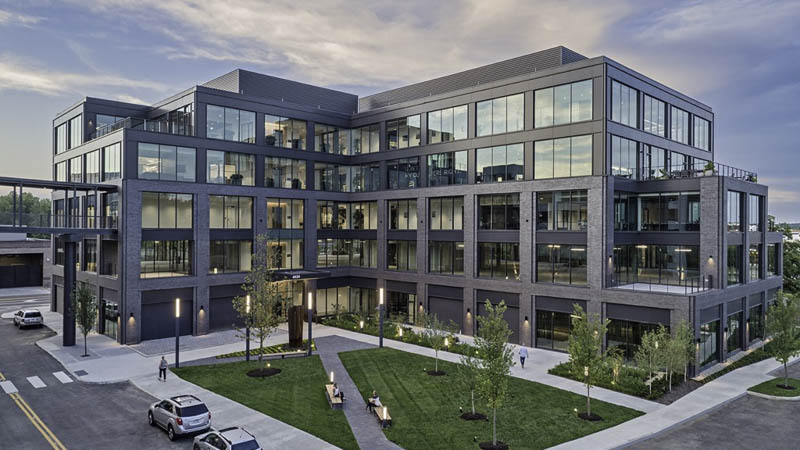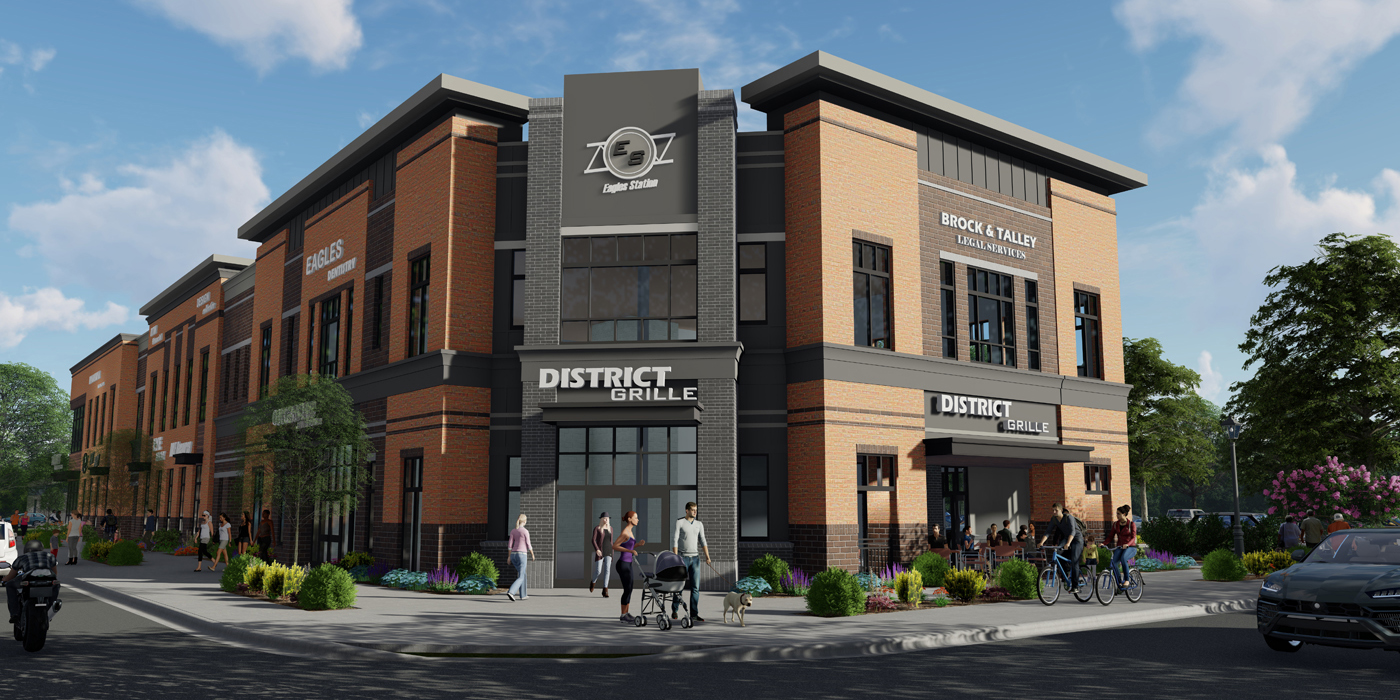When commercial architects Work With Stakeholders to Build Consensus and Ownership
Wiki Article
Just How Commercial Architects Can Change Your Service Room With Specialist Layout Solutions
Commercial architects play a necessary role in reshaping service environments. Their proficiency in layout can substantially boost both capability and aesthetics. By developing spaces that mirror a brand name's identity, they improve operational effectiveness and staff member fulfillment. The effect of their work expands beyond plain appearance. Recognizing the nuances of cooperation and sustainability can result in transformative results. What details components make these changes effective?Understanding the Duty of Commercial Architects
Commercial architects play a crucial role in forming service settings that are both practical and cosmetically pleasing. They concentrate on designing areas tailored to the specific demands of services, making certain that every square foot is utilized effectively. These specialists incorporate components such as spatial format, lights, and materials to enhance productivity and worker well-being. By collaborating with clients, industrial architects collect understandings right into operational demands and brand identification, translating these into cutting-edge designs.Additionally, they navigate complex building ordinance and zoning regulations, ensuring compliance while making best use of layout potential. Their know-how encompasses sustainability methods, advertising energy effectiveness and eco-friendly products in their tasks. Through their creative vision and technical understanding, business architects not just develop appealing spaces but additionally foster environments that advertise collaboration and growth. Eventually, their contributions considerably affect the total success and picture of an organization.
Advantages of Specialist Style Providers

Tailoring Areas to Your Brand Identification
Customizing rooms to a brand name's identification is important for communicating its core worths and goal. Commercial architects play a crucial duty in enhancing a service's visual identification through thoughtful design options. By straightening architectural elements with brand concepts, firms can create environments that reverberate with customers and employees alike.Reflecting Brand Worths
Exactly how can a well-designed area personify a firm's core values? Commercial architects play an essential duty fit settings that reverberate with a brand name's identification. By integrating elements such as color schemes, products, and formats, they produce rooms that mirror the significance of business. For instance, a technology firm could go with open designs and contemporary furnishings to convey technology and partnership, while a luxury brand name might choose classy finishes and intimate rooms to stimulate exclusivity and refinement. Thoughtful style not only improves performance yet likewise fosters a strong link in between employees, customers, and the brand name. Ultimately, a well-crafted setting functions as a concrete depiction of a business's mission and vision, enhancing its values at every touchpoint.Enhancing Visual Identification
What components can effectively boost a brand's visual identity within a commercial area? Commercial architects play a pivotal role in incorporating style attributes that reverberate with a firm's ethos. Color pattern, typography, and materials can be tactically picked to show brand worths while making sure aesthetic allure. In addition, including logos and brand images right into the architecture can create a natural aesthetic story. Lighting style can further enhance the environment, leading customer understandings and experiences (commercial architects). Layout and furnishings selections should line up with the brand name's character, whether it's contemporary, traditional, or ingenious. Ultimately, a properly designed industrial space not only draws in clients yet additionally enhances brand recognition, creating a long-term impact that cultivates loyalty and interactionEnhancing Capability and Efficiency
Enhancing capability and effectiveness in commercial areas includes enhancing space application and developing workflows that streamline operations. Architects focus on creating formats that reduce squandered space while helping with smooth changes in between jobs. This method not only enhances productivity but additionally adds to a more cohesive workplace.Optimizing Room Application
Efficient room application is an essential element in commercial architecture, where the design must stabilize visual appeals with index performance (commercial architects). Architects utilize various approaches to take full advantage of offered square video while making certain that each location serves a distinct purpose. By assessing process, traffic patterns, and customer requirements, architects can create designs that boost both employee performance and client experience. Multi-functional rooms, versatile furnishings arrangements, and enhanced storage space services are vital parts in achieving this goal. Furthermore, integrating all-natural light and open rooms fosters a much more welcoming ambience, further elevating the utility of the setting. Ultimately, efficient space usage not just enhances operational performance however likewise contributes positively to the general brand image, making it an essential consideration in industrial styleStreamlined Operations Layout
Exactly how can a properly designed workflow transform a business space right into a hub of efficiency? Structured operations design concentrates on maximizing the physical format and functional procedures within an organization setting. By purposefully setting up workstations, conference locations, and sources, architects can remove unneeded motion and enhance cooperation. This thoughtful style decreases distractions and helps with communication, allowing staff members to concentrate on their jobs extra efficiently. In enhancement, incorporating modern technology right into the process can additionally automate procedures, lowering time spent on regular jobs. As a result, services experience enhanced worker spirits and raised result, producing a dynamic environment that promotes innovation. Inevitably, purchasing structured workflow layout not only enhances capability but likewise places an industrial room for sustainable development and success.Promoting Cooperation With Style
Although modern-day work areas commonly prioritize private performance, the style of commercial spaces significantly stresses partnership as an essential vehicle driver of innovation and group cohesion. Architects play a vital role in developing atmospheres that cultivate interaction among workers. Open up formats, multifunctional rooms, and strategically put public areas urge spontaneous discussions and brainstorming sessions.Incorporating elements such as movable furniture and adaptable meeting spaces permits groups to reconfigure rooms based upon their collective requirements. In addition, incorporating technology, like interactive whiteboards and video clip conferencing devices, boosts the ability to interact effectively, despite location.Natural light and biophilic design elements also contribute to a more welcoming environment, promoting comfort and wellness, which are essential for efficient team effort. By focusing on these aspects, commercial architects can create vibrant settings that not just improve cooperation yet likewise drive overall business success.Lasting Layout Practices in Commercial Design

Situation Studies: Effective Makeovers by Commercial Architects
The execution of sustainable layout methods has not only improved the method to business design yet has additionally brought about exceptional changes in various service spaces. One remarkable situation is the redesign of a tech firm's headquarters, where architects integrated natural light and green wall surfaces, leading to improved staff member wellness and productivity. This change lowered power expenses by 30% and enhanced the firm's public image.In another circumstances, a store undertook a full overhaul, making use of recovered products and energy-efficient systems. This not only brought in eco-conscious consumers however additionally raised foot web traffic by 25%. A third like it situation included a company office that embraced an open-plan format with adaptable work spaces, promoting cooperation among groups. The architects' concentrate on developing a vibrant and adaptable setting significantly boosted staff member complete satisfaction. These situation studies exhibit just how commercial architects can produce impactful spaces that straighten with service goals and sustainability efforts.Frequently Asked Inquiries
How Much Do Commercial Architecture Solutions Normally Cost?
The expense of industrial style services differs commonly, normally varying from $100 to $250 per hour. Factors influencing pricing include project complexity, location, and the architect's experience, making it vital for services to acquire comprehensive price quotes.What Types of Businesses Profit Many From Commercial Architects?
Various businesses, consisting of retail, friendliness, and corporate offices, significantly gain from business architects. These experts improve functionality, looks, and brand name identity, ensuring spaces are optimized for consumer involvement and worker efficiency, eventually promoting organization development.How much time Does a Business Layout Task Normally Take?
The timeline for an industrial layout task generally varies from a number of weeks to several months. Variables influencing duration consist of task intricacy, regulatory authorizations, and cooperation amongst stakeholders, every one of which can affect overall completion time.Can I Work With an Industrial Architect for Improvements Only?
Yes, employing a commercial designer for renovations is feasible. Numerous architects focus on remodelling tasks, providing knowledge in maximizing existing spaces while sticking to regulations and improving capability, looks, and total value of business environment.What Certifications Should I Search for in an Industrial Designer?

Report this wiki page